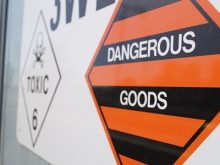
“IATA recognizes the DGR certificates issued by DGCA-approved Indian DGR training schools. What we are asking for is an additional letter from the training provider to expedite the authentication of the DGR certificate and keep the duration of the cargo accreditation process to a minimum,” says Albert Tjoeng, Head – Corporate Communications at IATA. He adds, “DGR certification is a requirement for IATA cargo accreditation. This is to ensure there are trained personnel for handling the safe transportation of cargo, particularly dangerous goods. The DGR certification for IATA cargo accreditation can be obtained from the following:
- an IATA Dangerous Goods Course,
- an airline’s course of formal instruction in Dangerous Goods Acceptance,
- a course of formal instruction in Dangerous Goods Acceptance offered by a training establishment which has been appraised and endorsed by IATA as an Accredited Training School (ATS) and/or Competency Based Training Assessment (CBTA) Center,
- the ICAO-FIATA Dangerous Goods Training Course in Dangerous Goods Acceptance.
- a course of formal instruction offered by a training organization or other establishment which has been endorsed, or meets the criteria established by the regulatory authority responsible for Dangerous Goods in the specified country.
“Unfortunately, over the years, we have received fraudulent DGR training certificates across the world. This is a concern that can have safety implications. As there is no global list of the thousands of training courses approved by each national aviation authority, nor of the courses that comply with the national aviation regulations, from 1 July 2024, we have required a letter for certificates issued by these training providers. This is to help authenticate that the certificate is genuine and help maintain this safety requirement within air cargo. Instead of a letter, some training organizations have printed the text on the reverse side of the certificate,” he adds.
 Cargo Breaking News
Cargo Breaking News


